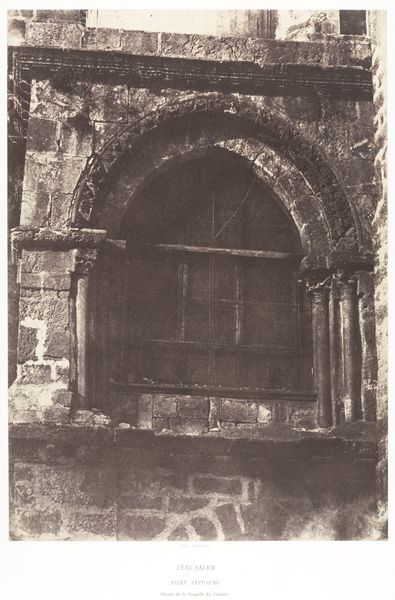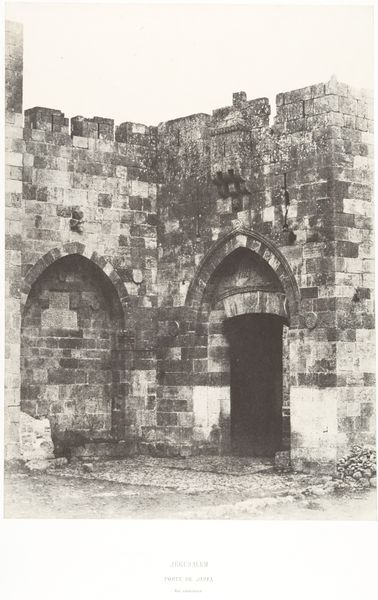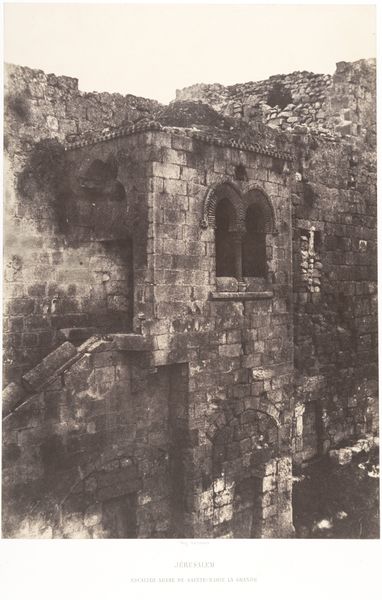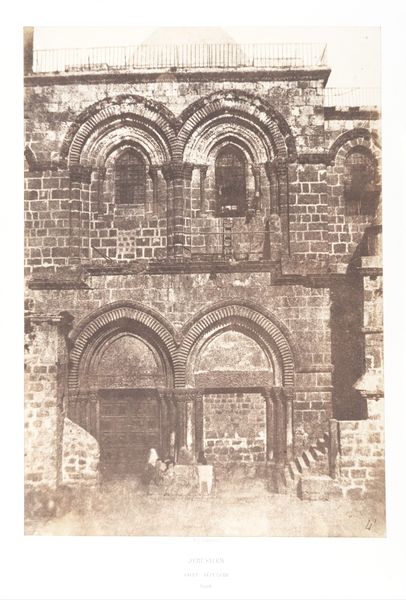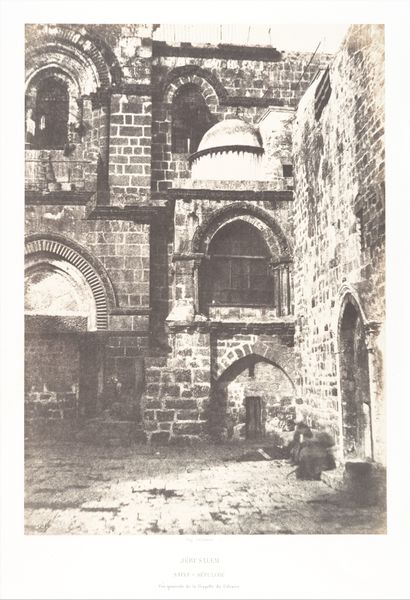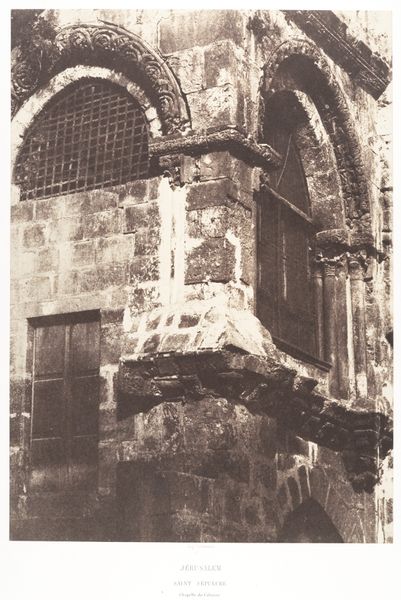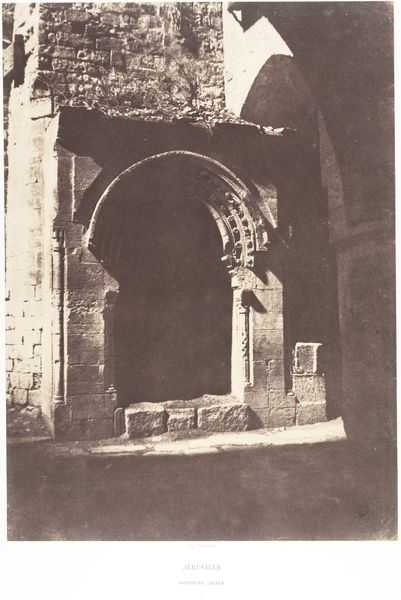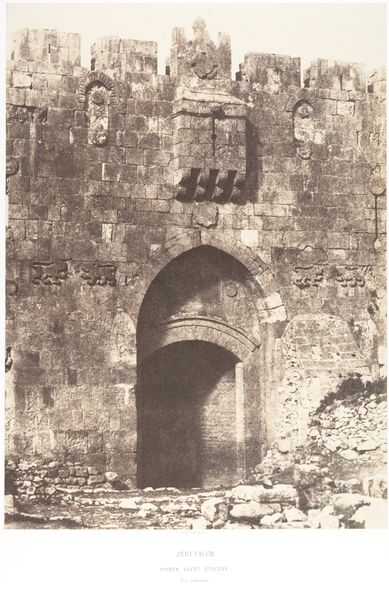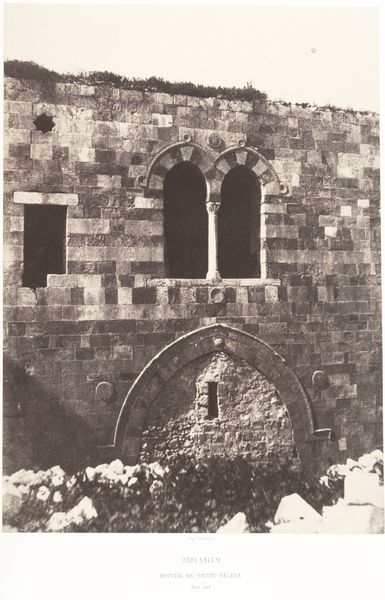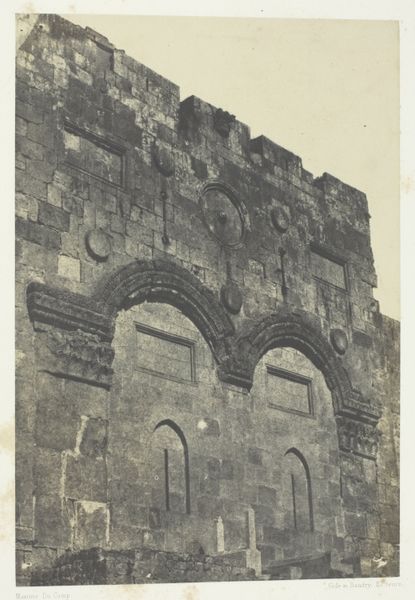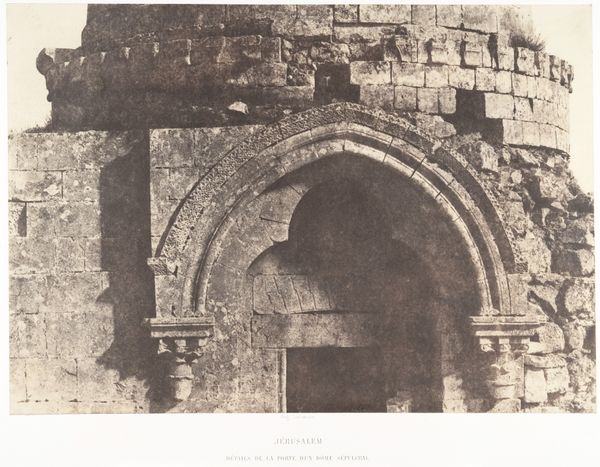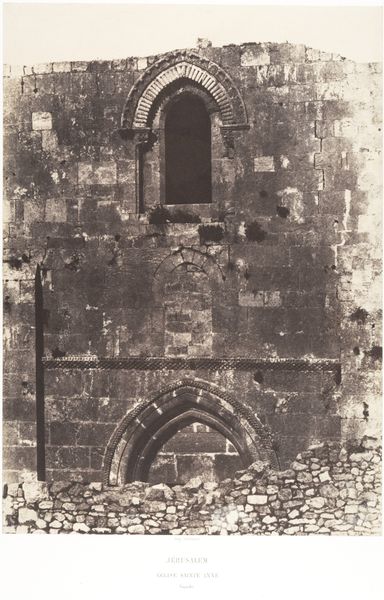
Jérusalem, Palais de rois de Jérusalem, Entrée principale 1854 - 1859
0:00
0:00
photography, collotype, architecture
#
photography
#
collotype
#
geometric
#
ancient-mediterranean
#
cityscape
#
islamic-art
#
architecture
#
realism
Dimensions: Image: 32.9 x 23.3 cm (12 15/16 x 9 3/16 in.) Mount: 59.7 x 44.7 cm (23 1/2 x 17 5/8 in.)
Copyright: Public Domain
Curator: Salzmann's photograph, "Jérusalem, Palais de rois de Jérusalem, Entrée principale" transports us back to Jerusalem between 1854 and 1859. It captures, as the title suggests, the main entrance of a King's Palace in Jerusalem. Editor: There's a real somber dignity about it, isn't there? The tones feel aged, the light is almost hesitant as it washes over the stones, making me feel both the weight of time and of human intention. Curator: Precisely. Consider the process Salzmann employed. He didn’t just point and shoot; each print involved the meticulous preparation and coating of glass plates with light-sensitive chemicals, long exposures in the unforgiving Jerusalem sun, and then, the careful developing and printing of collotypes. Editor: The labor involved is really incredible. Each step requiring precise knowledge, like alchemy! Look at the facade: layers of brick and stone fitted to form a geometric pattern. The amount of energy consumed in making this architecture, and now immortalized in a photograph, feels palpable. I’m really struck by how the medium becomes part of its subject—ruins made by process, imaged via painstaking methods, to be seen through more processes. Curator: You are absolutely right. Think too of the colonial context of this photographic project. It was meant to objectively record architectural and biblical history and the "holy land," but how objective could it be? There are visible scars of past occupations in the stonework of the palace that is juxtaposed with very intricate, precise decoration. Editor: These aren’t just architectural details but a statement of social production. The materials themselves—the stone quarried, the design rendered, the hands that laid each block—all speaking to a power dynamic. That really transforms my view of what Salzmann intended. Curator: Indeed. To view this photograph merely as a visual document overlooks its deeper complexities—the alchemy of image-making and the historical forces acting upon a city and culture captured in a single, still moment. It reveals, rather than conceals. Editor: Looking at it now, I can't help but feel the ghost of human effort resonating.
Comments
No comments
Be the first to comment and join the conversation on the ultimate creative platform.
